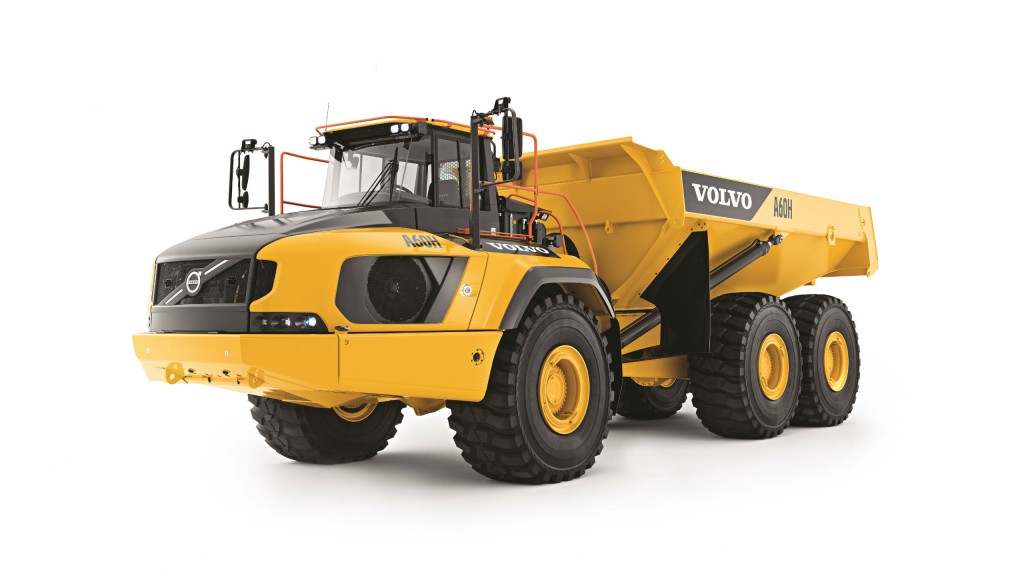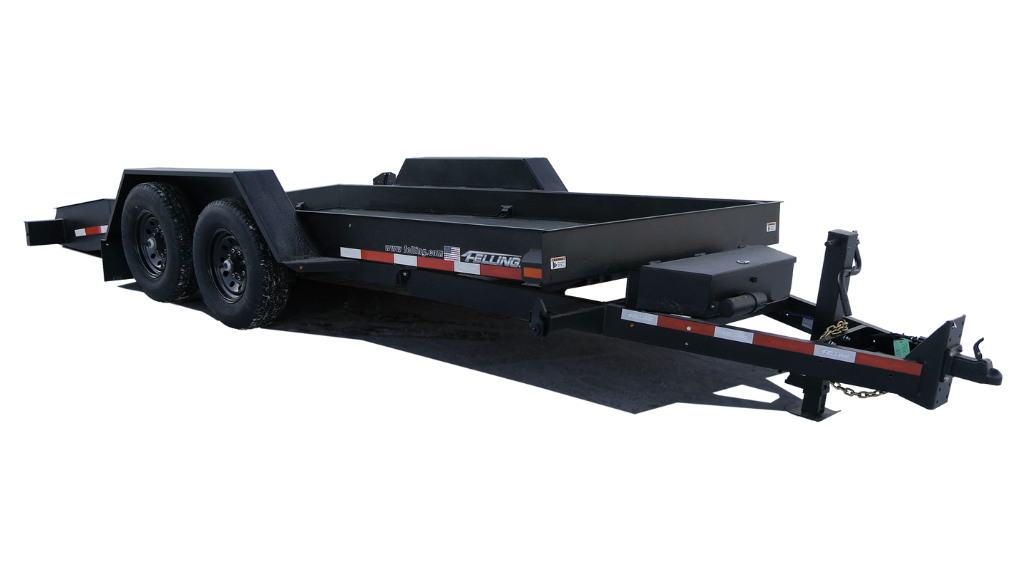Volvo A60H the largest articulated hauler on the market highlights 50 years of design innovation

The articulated hauler concept is celebrating its 50th anniversary in 2016, marking five decades of transporting earth, gravel and a host of other materials over rough, muddy, slippery, steep or otherwise impassable terrain. The company that commercially launched the concept in 1966, Volvo Construction Equipment, continues to innovate with the launch of its H-Series range. This new series includes its biggest ever production articulated hauler, the A60H.
The A60H significantly lowers the cost-per-ton ratio
The 60-ton capacity A60H is built for heavy hauling in severe off-road operations, including quarries, open pit mines and large earthmoving operations. It offers an alternative to rigid dump trucks and construction trucks operating on soft, uneven or steep roads, where it can haul a similar amount of material in a shorter cycle time. With a 40 percent increase on Volvo’s previous largest hauler the A40, the A60H significantly lowers the cost-per-ton ratio for hauler customers.
Good stability, comfort and high hauling speeds are ensured thanks to matched drivetrain, automatic drive combinations (including 100 percent differential locks), all-terrain bogie, hydro-mechanical steering and active suspension. It is powered by a 16-litre Volvo engine, delivering 382 kW of power and excellent fuel efficiency.
Volvo has also incorporated the latest technology to monitor machine operation and status, advising on the best ways to increase profitability. The On Board Weighing System guarantees the optimal load every cycle. This maximizes production, boosts fuel efficiency and reduces machine wear in all site conditions and operations.
A centrally positioned seat, excellent suspension, low noise levels, climate control and visibility all help reduce operator fatigue.
The A60H’s dump support system, Hill Assist and load-and-dump brake help the operator to stay in control at all times.
Servicing the A60H is quick and easy. The front grill swings down, acting as a service platform with anti-slip steps. The electric hood opens to 90 degrees, combined with electric belly plate, allowing full and safe access to the engine compartment.
The evolution of Volvo’s articulated trucks
1966 was the year that the Soviet’s Luna 9 made the first rocket assisted landing on the moon, The Cultural Revolution began in China, England won the World Cup and the Rolling Stones were banned from 14 New York hotels. With so much going on it was easy to overlook the launch of the DR631, the birth of the articulated hauler. Essentially a development of an agricultural tractor (which Volvo then made) and a trailer, they were permanently joined via an articulating hitch, and the front axle of the tractor removed. Nicknamed “Gravel Charlie”, it may have had only a meagre 10-ton payload, but it set the stage for greater things to come. Surprisingly though, its popularity grew only slowly to start with, sales in the early years being confined to its home Swedish market.
One of the main reasons for the ongoing popularity of Volvo’s haulers has been the consistent development of the concept. Only one year after its launch, in 1967, the company introduced the DR860, the first articulated hauler with a bogie, meaning that the material in the load body remains level and stable (reducing spillage) while the wheels cope with very uneven road surfaces. The first hauler with a turbo-charged engine – the DR860T – arrived in 1970, and in 1979, things literally started to speed up, with the launch of the 5350. Capable of 50 km/h, the “Off-road Express” was able to maintain previously unheard of speeds, thanks to a suspended front axle and an automatic transmission. Traction was further increased with the addition of a six wheel drive system.
The A-Team arrives
The A20 was launched in 1986 with a 200-hp engine and a 20-ton payload. Things soon got a lot bigger in 1987 with the advent of the 35-ton abilities of the A35, which also featured a retarder built into the transmission to reduce wear on the service brakes.
The range was given a major overhaul in 1993 with the introduction of the C-Series, which featured a low emission engine, fully automatic transmission and 100 percent differential locks. The 40-ton-class hauler was launched in the mid-1990s, in the shape of the A40, pulled along by a mighty 400-hp engine and stopped by oil-cooled wet disc brakes.
Bigger, stronger, tougher, more reliable, easier and cheaper to operate, safer for the environment and the operator – the D-Class of articulated haulers from Volvo CE were introduced in 2000. Covering payload ranges of 24 to 37 tons, all D-series Volvo articulated haulers – models A25D, A25D 4x4, A30D, A35D and A40D – featured a comfortable cabin and no daily greasing. For the first time, diagnostic electronics also alerted both operator and technician of problems before they became failures; thus increasing uptime.
Volvo’s development of Automatic Traction Control (ATC) was a signficant advance for articulated trucks. ATC relieves the operator from manually operating differential locks and drive configurations (6X4 or 6X6) as driving conditions change. Multiple sensors constantly check the speed differences within the driveline and select the best drive combination for the conditions. This also reduces tire wear, driveline stress and fuel consumption.
In 2007, Volvo CE decided to adopt a radical approach with the introduction of hydraulic suspension with automatic levelling and stability control on all wheels. This “Full Suspension” variant provided excellent off road performance, allowing the hauler to travel at much higher speeds and increasing productivity. Even when fully loaded, the E Series haulers’ ability to “float” over rough ground without bouncing and rolling improved operator comfort and safety. These benefits increase with the length of haul road, effectively absorbing all rough spots and allowing operators to maintain considerably higher average speeds – with or without a load. A hauler travelling at 55 km/h over rough haul roads was now possible, with minimal bouncing, rolling or shaking.
The F-Series in 2010 met Tier 4i emissions regulations, featured a package of improvements and saw the inclusion of CareTrack, Volvo’s telematics system, as standard. In 2014, the G-Series met Tier 4 Final emissions regulations and oilcooled wet multiple-disc brakes, proven on the A35 and A40 models, were introduced on the A25G and A30G.
Volvo CE has come a long way from its original 10-ton articulated hauler in 1966. Fifty years and 50 tons later, Volvo is still finding new ways to advance the articulated truck market.



